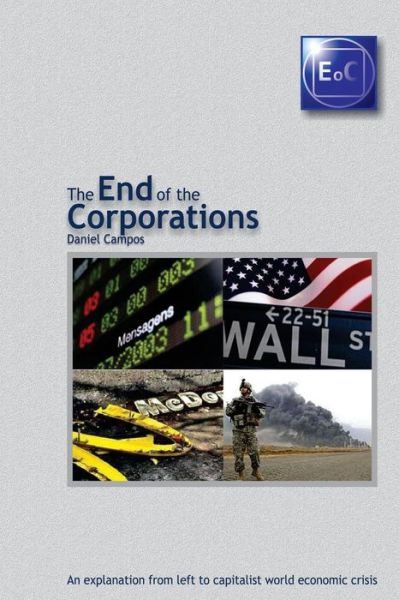
Tell your friends about this item:
The End of the Corporations
Daniel Campos
The End of the Corporations
Daniel Campos
Publisher Marketing: " The End of the Corporations" traces the crisis of capitalism since August 2007, first in the U. S. with the fall of Bear Sterns, AIG, Lehman Brothers, and then with the crisis spreading out to affect the whole world. This book examines the political changes brought to the U. S., Europe and the Middle East. It also draws a comparison between the current crisis and the one in 1929, analyzes the subsequent evolution of capitalism in the twentieth century, the post-war "boom," the rise of multinational corporations, and the crisis of the '70s. Globalization, the emergence of multinational corporations, the evolution of financial capital, and the Investment Banks are also evaluated. Finally, the book shows an analysis of capitalism throughout history, which suffered major crises and its link to the social and political phenomena. Following the guidelines of Marx, The End of the Corporations follows the history of capitalism, from its birth, in order to examine the facts and laws that explain how it came about and where the current crisis will go. "In the face of the magnitude of the historic character of capitalism's current crisis, it may be well worthwhile to stop and ask ourselves: Has capitalism ever been through crises of similar importance? In what way have these crises been overcome? What political and social phenomena spawned the crisis? And on the other hand: what political and social phenomena did the crises produce?" Highlights "Multinationals are a higher form of accumulation, containing and outperforming monopolies. With multinationals, capitalism went from a lower form of accumulation and concentration of capital to a higher one, but as we saw in Chapter I, this process was not peaceful. To move from one form of accumulation and concentration of capital to another, it took 30 years and 2 world wars, with the balance of millions dead, razed cities, and nations and infrastructure destroyed " "When "Keynesians," such as Paul Krugman, Joseph Stiglitz and Nouriel Roubini, say that capitalism can recreate the "Keynesian regime" today, loudly claim economic stimulus, public works, and income taxes, and state that these measures may solve the grave crisis of 2007, they're just lying. They don't say that the scheme inspired by Lord Keynes was previously possible because cities, bridges, roads, counties, municipalities and factories were destroyed . " " The world's economic crisis that started in 2007 is the most important in the history of capitalism. His most spectacular expression are the "bailouts," a massive injection of funds that takes more than U$S 60 trillion ... these figures, the largest in history, could rebuild Haiti 40 times, banish world hunger, or stop the destruction of the environment " "The current crisis that started in 2007, shows the exhaustion of the regime of globalization... Multinationals, the highest expression of the appreciation of capital and private property, account for approximately 30% of global GDP and 25% of trade. Without the massive intervention of central banks and the support of the G7's nations, they would have disappeared. " "The crisis is installed in the center of the economy of the G7 countries. This occurs because of the attack to the heart of the world's capitalist system, multinationals, large companies and banks ... whose interests are becoming more deeply and intimately intertwined. The collapse of the current crisis was partially fixed thanks to the massive intervention of the G7's nations and the undeveloped countries."
| Media | Books Paperback Book (Book with soft cover and glued back) |
| Released | December 6, 2013 |
| ISBN13 | 9781494416126 |
| Publishers | Createspace |
| Pages | 244 |
| Dimensions | 152 × 229 × 13 mm · 331 g |
More by Daniel Campos
See all of Daniel Campos ( e.g. Paperback Book , Hardcover Book and Book )





![Cover for Daniel Campos · De Tarija a La Asuncio N. Expedicio N Boliviana De 1883. Informe. [with Plates, Including a Portrait, and a Map.] (Paperback Book) (2012)](https://imusic.b-cdn.net/images/item/original/290/9781249012290.jpg?daniel-campos-2012-de-tarija-a-la-asuncio-n-expedicio-n-boliviana-de-1883-informe-with-plates-including-a-portrait-and-a-map-paperback-book&class=scaled&v=1628356483)